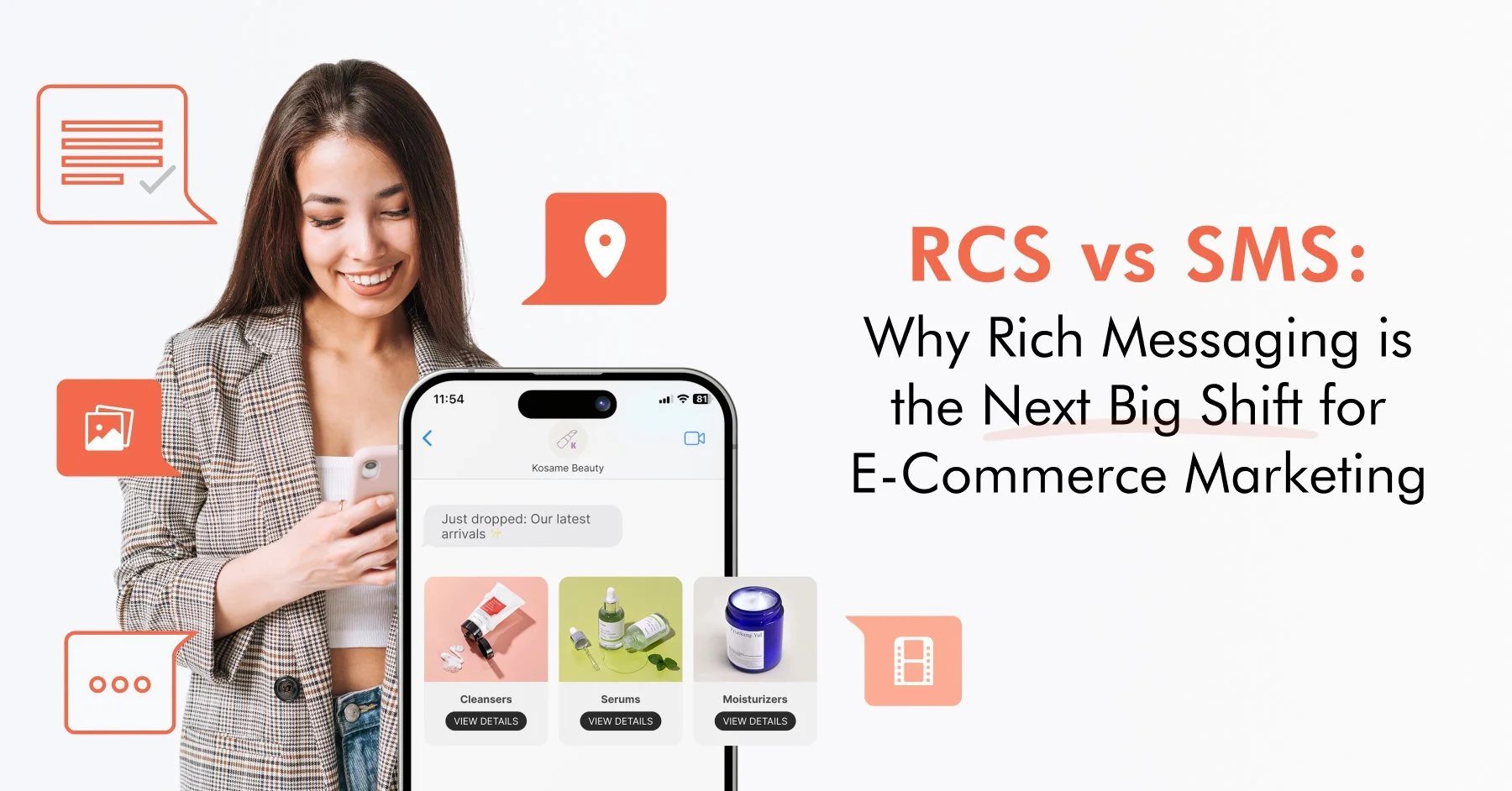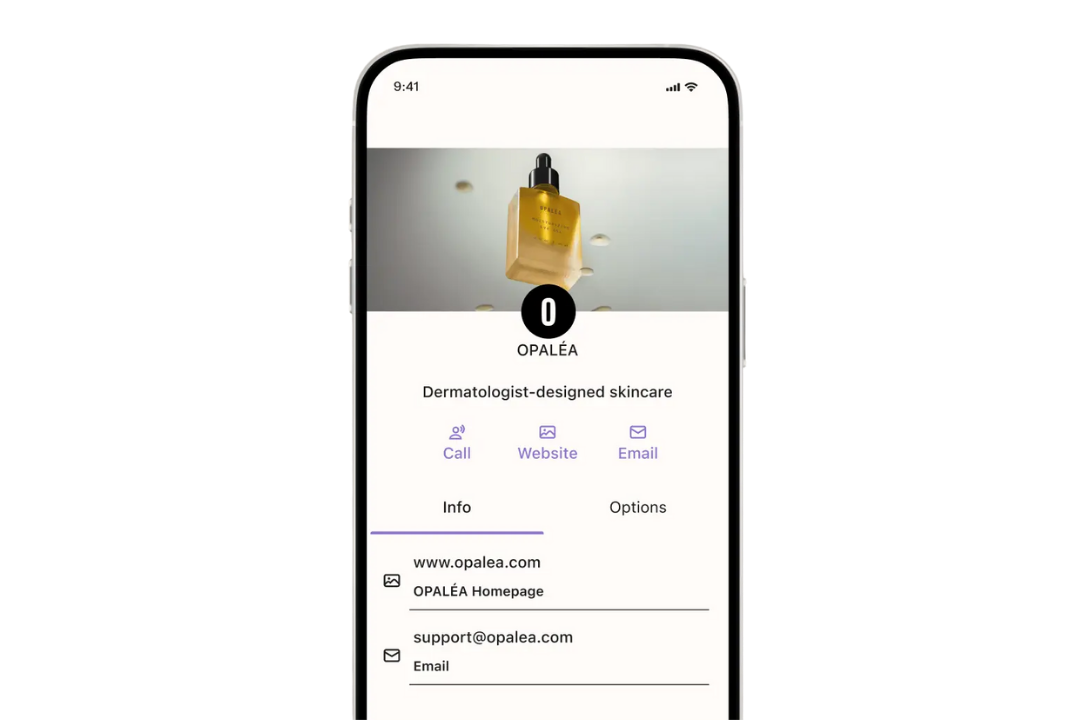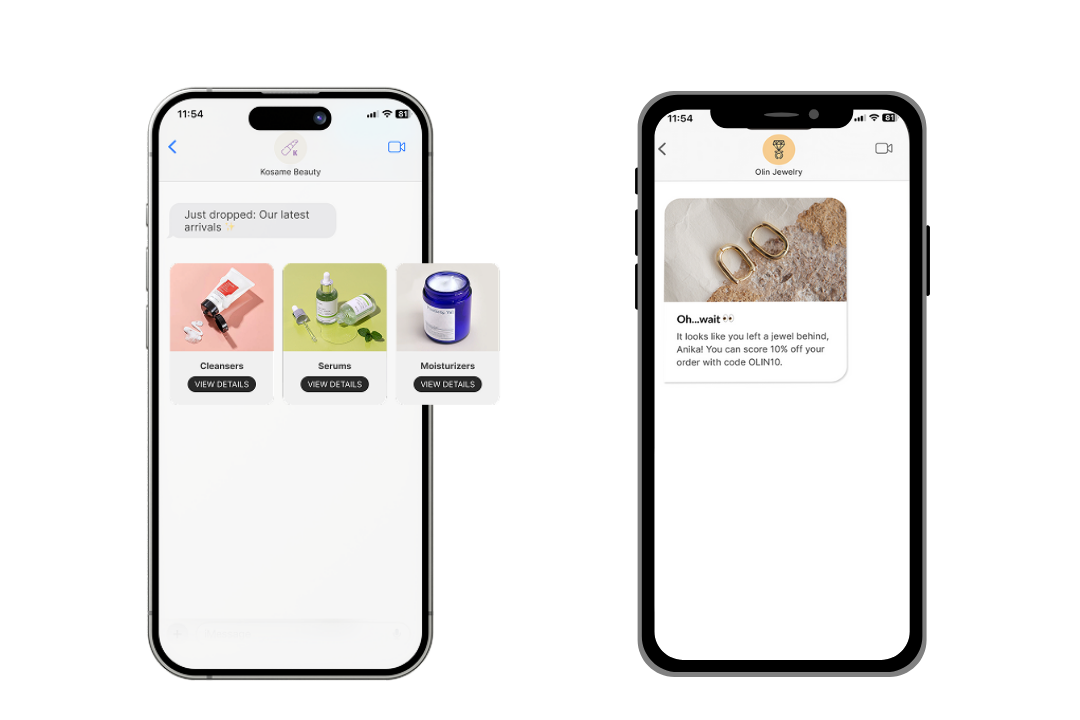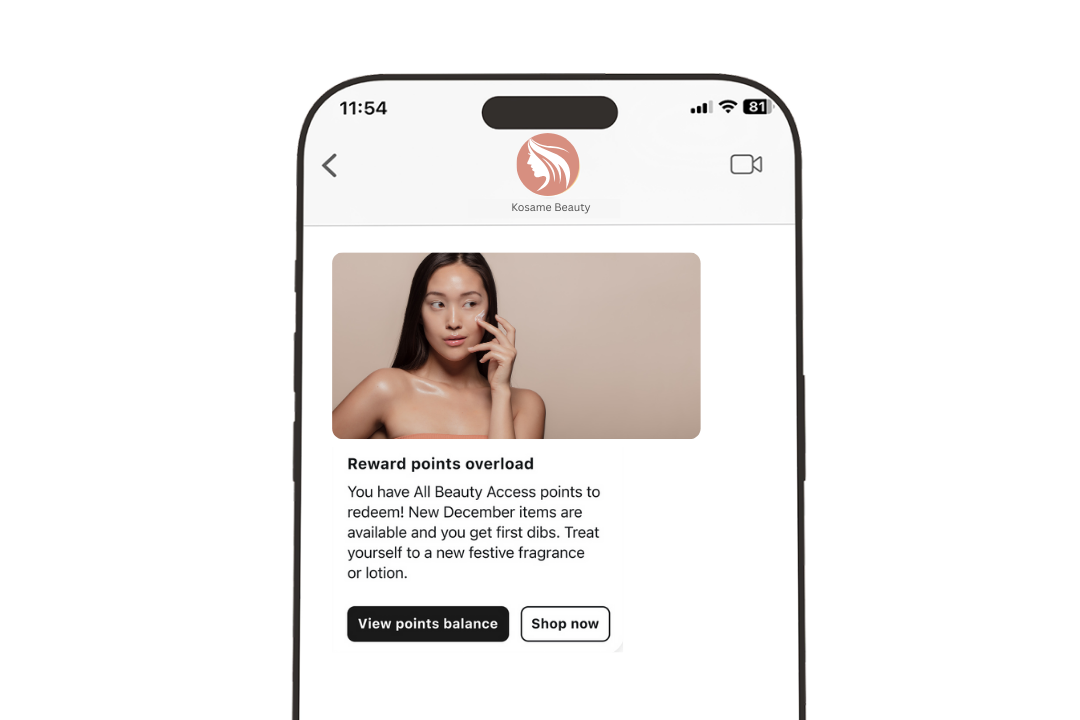RCS vs SMS: Why Rich Messaging Is the Next Big Shift for E-Commerce Marketing
In the world of mobile messaging, RCS (Rich Communication Services) is popping up more and more in conversation. On paper, it sounds simple: a next-generation version of SMS offering a richer, more dynamic, and more secure messaging experience. Yet, for marketers, it means a very real shift in how we think about mobile-first retention.
Where SMS is limited to short text and the occasional link, RCS gives us more tools to play with: branded sender IDs, high-resolution imagery, buttons, and even delivery and read receipts. In other words, the kind of experience customers expect everywhere else in digital, but finally inside their native messaging app.
The question now isn’t whether RCS will matter for marketing, it’s how soon you’ll need to build it into your strategy, and what you’ll do differently once your messages can actually look and feel like your brand. Here’s everything you need to know.
What is RCS? How does it differ from SMS?
So what is RCS, really? At its core, it’s a modern upgrade to SMS. The difference between the two comes down to capability.
SMS is limited: 160 characters of plain text, maybe a link, maybe an image if you stretch into MMS. It’s simple, reliable, but static. RCS, on the other hand, gives marketers a complete toolkit. It feels more like an app experience than a text. Some key features include:
Building an early warning system
Stop waiting for customers to cancel before you act. The most effective retention strategies use predictive analytics to identify at-risk customers weeks or months before they actually leave. This means scoring customers based on engagement patterns, purchase behaviour, and interaction history to create a prioritised list of who needs attention first.
Your customer data platform should flag customers who haven't opened an email in 30 days, made a purchase in 45 days, and whose last support interaction was negative. That's not three separate issues; it's a scream for intervention. When you can predict churn probability with 85% accuracy, you shift from damage control to proactive retention.
Branded messages with your logo, fonts, and colour palette
Rich media support: high-resolution images, GIFs, and videos
Tappable buttons for quick replies or deep links
Carousels to showcase multiple products or offers in one message
Read receipts and delivery tracking for better insight into engagement
Longer messages without the 160-character cap
Secure messaging with verified sender IDs
And because it all happens inside the phone’s default messaging service, customers don’t have to install anything new.
RCS itself isn’t new. Carriers first started working on it over a decade ago, but it was clunky, inconsistent across carriers, and never really took off. Google gave it a push by baking it into Android’s Messages app, which is why a lot of Android users have already been sending and receiving RCS without even realising.
The real shift is happening now that Apple has confirmed support is coming to iOS in 2025. That’s when RCS will go from niche to universal, because the two ecosystems will finally speak the same language. If a customer’s device or carrier doesn’t support it yet, the message simply falls back to SMS or MMS. In other words, no one is left out. But the experience is richer wherever RCS is live.
The Benefits of RCS Marketing
RCS isn’t just prettier text messages. For brands and marketers, it opens up a whole new set of levers for engagement and conversion. Here’s what we’re most excited about:
1. Richer customer experience
Branded sender ID, colours, logo, high-res imagery, video, and carousels so your messages finally look and feel like your brand and not generic texts.
Source: Klaviyo
2. Built-in interactivity
Buttons and quick replies so customers can take action instantly (from adding to cart to booking an appointment) without even leaving their messaging app.
3. Stronger trust signals
Verified business profiles and read receipts give customers confidence they’re engaging with a real brand and not with spam.
4. Deeper data & reporting
Delivery confirmations and engagement metrics (who saw it, who clicked) go way beyond SMS’s binary “delivered/not delivered.”
5. Seamless fallback
If RCS isn’t supported, your message downgrades automatically to SMS/MMS, so no one on your list is excluded (your message just might be a bit fragmented).
6. Future-proofing your strategy
With Apple adopting RCS this year, it will quickly move from a new “nice to have” to table stakes in lifecycle marketing.
Best Practices for Your RCS Strategy
Here’s how to make RCS work in your retention strategy:
Keep the experience native: RCS lets you do a lot, but avoid stuffing in every feature at once. Use buttons, carousels, or media where they add value and not just for the sake of it.
Match your brand identity: Take advantage of branded sender IDs, colour and imagery. This is your chance to make messages feel like an extension of your site or app and double down on your brand identity.
Test flows not just campaigns: RCS will shine in automated journeys (browse abandonment, post-purchase, replenishment). Make sure you’re optimising these and not only one-off sends.
Monitor performance beyond clicks: Track delivery rates, open/read receipts, and button taps. These signals give you a deeper picture of engagement than SMS ever could. Analyse and optimise in response.
Respect the channel: At the end of the day, it’s still messaging. Frequency caps, timing, and customer consent are just as important here as with SMS. Always check local regulations and be conscious of your customers’ preferences.
For more information on messaging compliance, have a read of our SMS Best Practices.
Use Cases for RCS
So where does RCS actually fit into a retention strategy? Beyond replacing standard SMS, it opens up a few high-impact applications:
Guided shopping experiences
Think product carousels for new drops or curated edits. Customers can browse, click straight from their messaging app and even add to cart without jumping through multiple links
Rich media (images + descriptions), tappable CTAs, and in-message browsing all make this possible.
For example, a fashion brand launches a new collection, customers receive a message with a swipeable carousel of the collection. Each tile has a “View Details” button, taking them directly to that product page or a shoppable quick checkout flow. Or instead of a plain text nudge for an abandoned cart reminder, customers get a message showing the exact product(s) left behind with options like “Complete Checkout” or “See Similar Styles.”
Transactional confidence
Replace plain text confirmations with visual order updates. Confirmations and delivery updates will feel more polished with product images, verified sender IDs and tappable support options.
This also means customers can track orders in real time, view return instructions, or connect directly to support if something goes wrong.
Loyalty and rewards
With RCS, loyalty status, points balances and benefits can all be delivered visually with no need for customers to dig through their inbox or log into an account. This keeps loyalty top-of-mind.
All customers to tap to redeem points, unlock offers, and get early access to drops (depending on your loyalty programme structure) with no hassle.
Replenishment and subscriptions
For consumables or repeat purchases, an RCS message can automate re-order reminders, timed to past purchase cycles, and show the exact last ordered products for one-tap re-purchases.
You can also send subscription details to customers so they can edit quantities or skip shipments directly in the thread.
Customer service handoff
Offer live chat and quick-reply options so customers can resolve questions in the same thread instead of calling support or waiting on email.
Enable “tap to ask” for sizing, shipping, and return information, and let customers get guided through common FAQs or escalate to a human agent.
For example, a customer receives an RCS update about a late delivery. At the bottom, you can integrate quick replies like “Track Package,” “Contact Support,” or “FAQ”. Choosing “Contact Support” could connect them to live chat inside the app. Or, imagine a post-purchase quiz delivered via quick replies, “Which style do you prefer?” or “What’s your size?”, letting customers share feedback without leaving their messaging app.
Final Thoughts
RCS isn’t a silver bullet, but it is a signal of where retention marketing is headed. As messaging channels evolve, customers expect brand interactions to feel just as seamless and polished as the rest of their digital experience.
For now, building with fallback in mind is key, but with Apple joining the fold, RCS is about to move from experimental to essential. The brands that start testing early will be the ones ready to turn conversations into stronger customer relationships.
Klaviyo has already launched a private beta for RCS, giving brands the chance to experiment before it goes mainstream. If you’re curious about getting access, or want to fine-tune your retention strategy in any way, the Melusine Studio team is always here to help. Book a no-obligation call with our boutique team of Klaviyo experts to find out where we can fit in.





